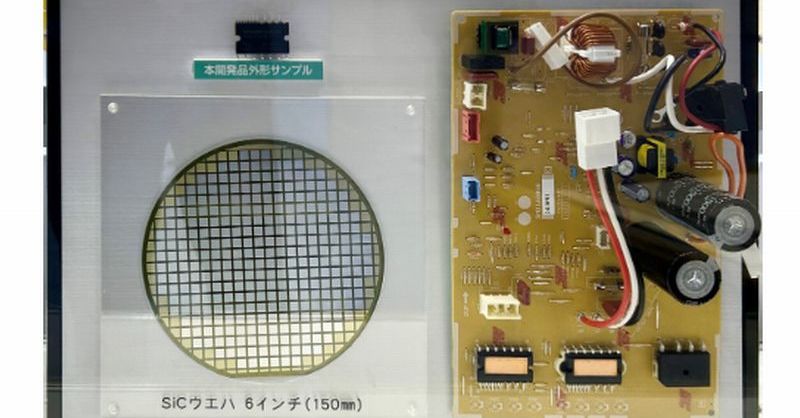Reduced AC Power Use: New SiC-Based IPM Revolutionizes Energy Efficiency
The quest for energy efficiency is a global priority, and advancements in power electronics are playing a crucial role. A significant leap forward has been made with the introduction of a new Silicon Carbide (SiC)-based Intelligent Power Module (IPM). This innovative technology promises to dramatically reduce AC power consumption across a wide range of applications, from industrial motors to electric vehicles.
What is a SiC-Based IPM and Why is it Revolutionary?
Traditional power modules rely on silicon IGBTs (Insulated Gate Bipolar Transistors), which suffer from higher switching losses at higher frequencies. This translates to wasted energy and reduced efficiency. SiC-based IPMs, however, leverage the superior properties of Silicon Carbide. SiC offers:
- Higher switching speeds: This allows for smaller, lighter, and more efficient power converters.
- Lower on-resistance: Reducing energy losses due to heat generation.
- Wider bandgap: Enabling operation at higher temperatures and voltages.
- Improved efficiency: Leading to significant energy savings and reduced operating costs.
These advantages combine to create a far more efficient power control system. This isn't just a marginal improvement; we're talking about substantial reductions in energy consumption, leading to a smaller carbon footprint and considerable cost savings for consumers and industries alike.
Applications Spanning Multiple Industries
The impact of this SiC-based IPM technology extends across several key sectors:
- Electric Vehicles (EVs): Improved efficiency translates directly into increased range and reduced charging times for electric vehicles, a critical factor driving EV adoption.
- Renewable Energy: Integrating SiC-based IPMs into solar inverters and wind turbine converters enhances energy harvesting and grid stability.
- Industrial Automation: Motor drives in factories and industrial processes can achieve greater efficiency, lowering operational costs and improving productivity.
- Data Centers: The increasing energy demands of data centers can be mitigated with these highly efficient power supplies.
The Environmental and Economic Benefits
The environmental benefits are undeniable. Reduced AC power consumption contributes directly to:
- Lower greenhouse gas emissions: Less energy consumption means fewer fossil fuels burned.
- Reduced carbon footprint: Contributing to global sustainability efforts.
- Improved air quality: Less reliance on fossil fuels translates to cleaner air.
The economic advantages are equally compelling:
- Lower energy bills: Significant cost savings for consumers and businesses.
- Increased efficiency and productivity: Boosting profitability in various industrial settings.
- Extended lifespan of equipment: Reduced heat generation leads to longer operational life.
Future Implications and Technological Advancements
This breakthrough isn't just a standalone achievement; it paves the way for further advancements in power electronics. Ongoing research and development focus on:
- Cost reduction: Making SiC-based IPMs more accessible to a wider range of applications.
- Improved packaging and integration: Simplifying the design and implementation process.
- Enhanced reliability and durability: Ensuring long-term performance and minimizing maintenance requirements.
The development of SiC-based IPMs marks a pivotal moment in the pursuit of energy efficiency. It's a testament to innovation's power to address critical global challenges, offering a brighter, more sustainable future.
Keywords: SiC, Silicon Carbide, IPM, Intelligent Power Module, Energy Efficiency, AC Power, Power Electronics, Electric Vehicles, Renewable Energy, Industrial Automation, Data Centers, Sustainability, Green Technology, Environmental Benefits, Economic Benefits.
Call to Action: Learn more about the latest advancements in power electronics and their impact on energy efficiency by visiting [link to relevant resource/research paper].
